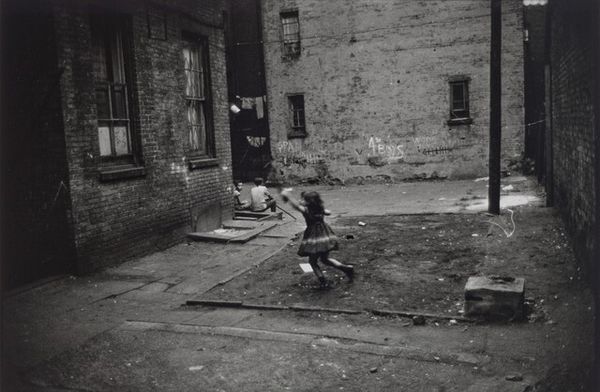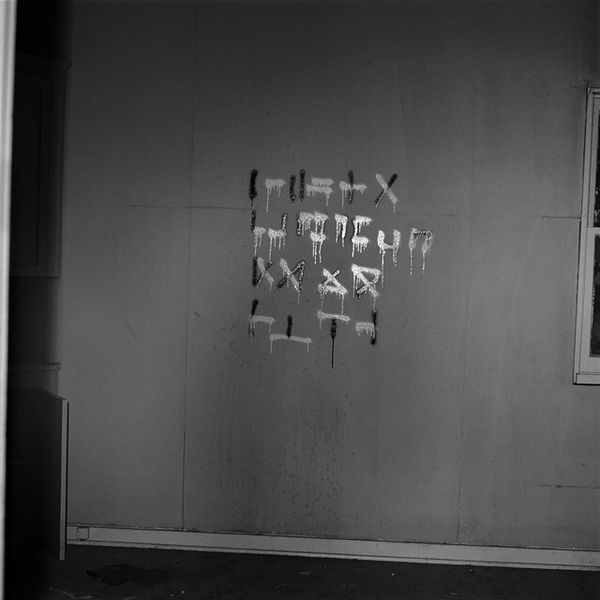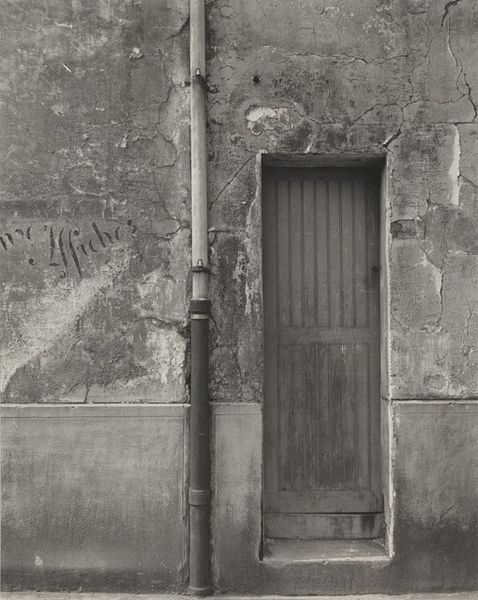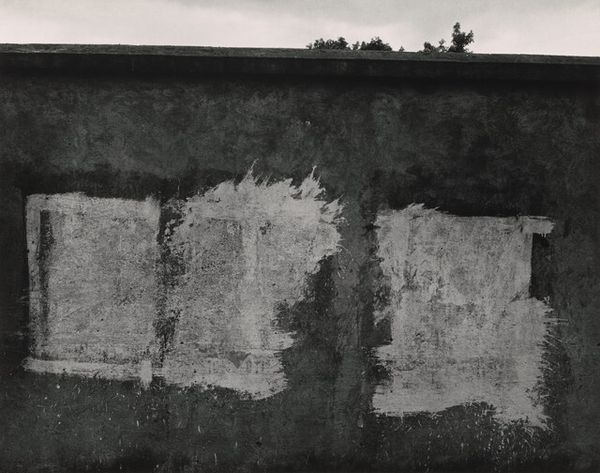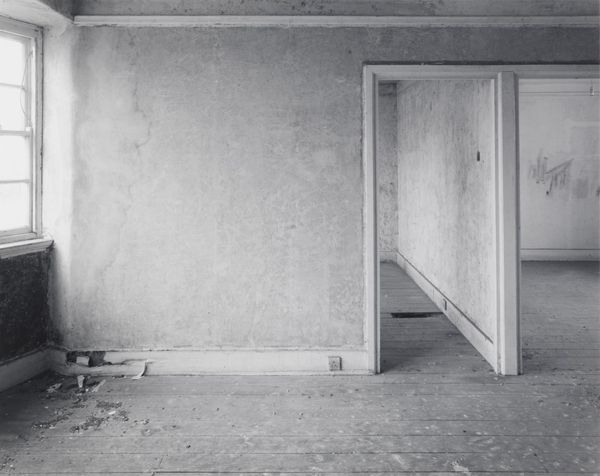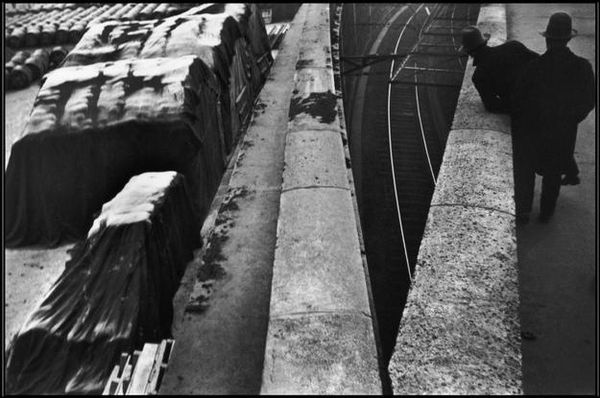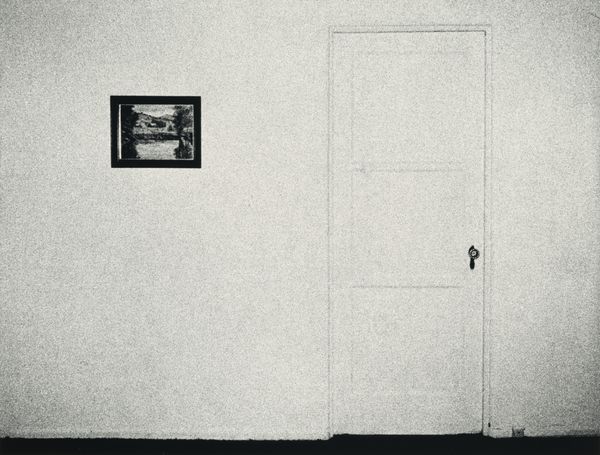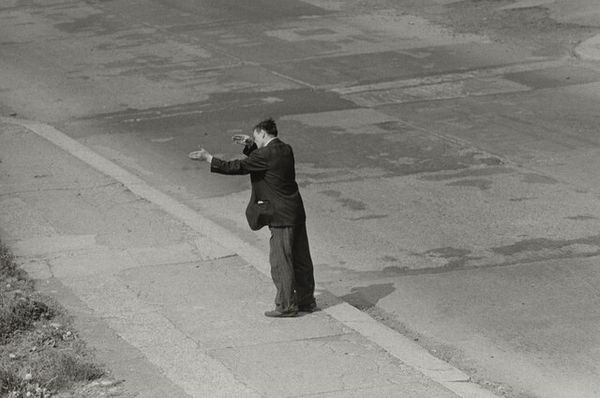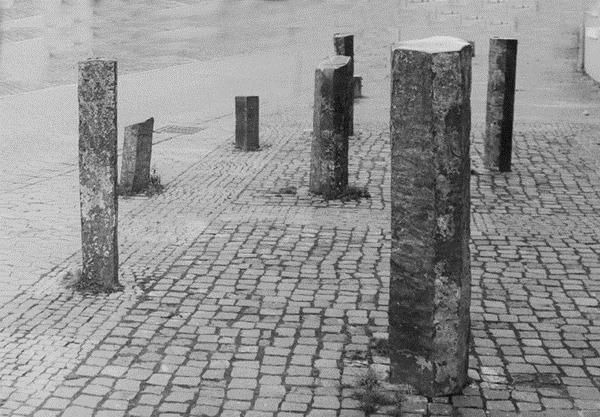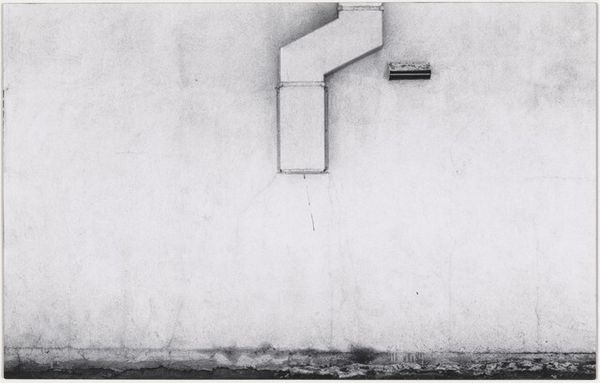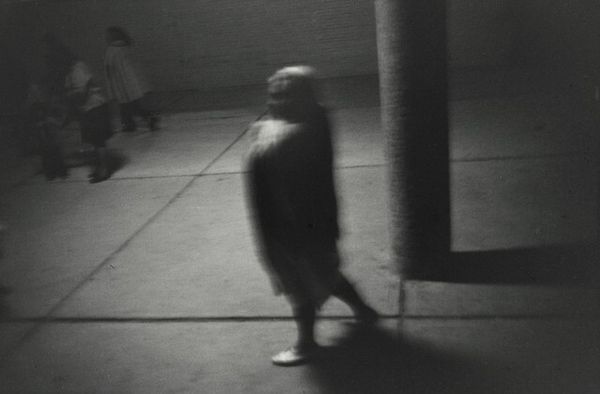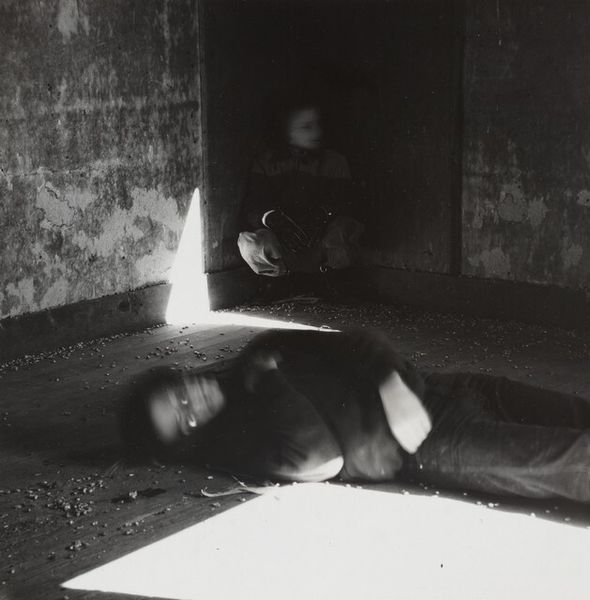
photography, gelatin-silver-print
#
street-photography
#
photography
#
black and white
#
gelatin-silver-print
#
monochrome photography
#
cityscape
#
monochrome
#
realism
#
monochrome
Dimensions: image: 18.8 × 28.5 cm (7 3/8 × 11 1/4 in.) sheet: 27.7 × 35.4 cm (10 7/8 × 13 15/16 in.)
Copyright: National Gallery of Art: CC0 1.0
Editor: Here we have William Carter's "Lower East Side, New York City," a gelatin-silver print from possibly 1963-2006. It feels very stark to me; a solitary girl interacting with this distressed wall. What strikes you most about this photograph? Curator: I’m immediately drawn to the wall itself. Consider the sheer materiality of it – the layers of paint, the water stains suggesting decay, the scribbles. These are all products of labor, both intentional and unintentional, layering together over time to reflect the social context. Even the process of photography itself, creating a gelatin-silver print, is labor-intensive, involving specific chemical processes and choices that speak to the artist's engagement with the materials at hand. Editor: So you're looking at the photograph almost as a document of social and physical processes? How does the figure of the girl fit into this? Curator: Absolutely. And regarding the girl, I see her action – seemingly drawing on the wall – as further layering another intentional element onto the already built up context, but also engaging in something that probably wasn't authorized by the 'owners' of the building, which again raises the question about labour conditions and rules during those years. It’s also about the availability and accessibility of these urban surfaces for artistic and individual expression. What kind of tools do you think she is using, what's the quality and value of those, compared to more traditional mediums? Editor: That's a really interesting way of framing it. It reframes the image from just being about a girl into something much more socially complex, by paying attention to the materiality of the setting. Curator: Exactly. It’s a conversation about who has the means to create and consume art and how art is woven into the fabric of everyday life, literally in this case. Editor: I hadn’t considered the "means" until you brought that up! It gives so much more to this piece when looking at it through that lens. Curator: That’s the beauty of examining the process and materials.
Comments
No comments
Be the first to comment and join the conversation on the ultimate creative platform.
